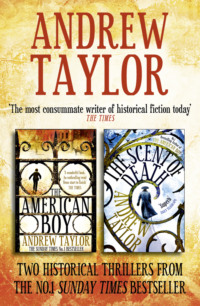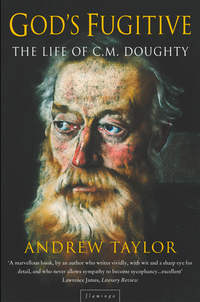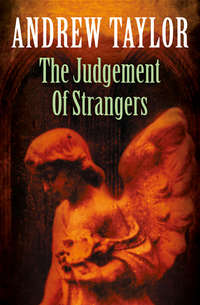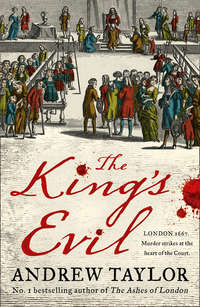
Полная версия
The World of Gerard Mercator: The Mapmaker Who Revolutionised Geography
The Habsburgs also held a virtually hereditary position in Germany as Holy Roman Emperors, but although they had occupied the imperial throne for nearly eighty years,† on his grandfather’s death Charles still had to win the support of the seven electors, the German princes who formally approved the succession of the Holy Roman Empire. The successful but expensive campaign of bribery with which he secured the imperial crown left him crippled by debt throughout his reign,‡ and he faced a constant struggle to raise money to pay the massive armies on which his grandiose campaigns to maintain his authority depended.
The empire was vast and unwieldy, and his possessions were too far-flung to be governed. When Charles traveled to his Spanish kingdom to secure the succession there in 1517, he was thought of as a foreign interloper surrounded by boorish Flemish advisers who trampled over the country’s aristocracy, while in the Netherlands he was reviled as a lover of Spanish luxury with an intolerable train of arrogant Castilian grandees. Had they ever heard it, his Netherlands subjects would have been less than amused by his famous boast, “To God I speak Spanish, to women Italian, to men French, and to my horse, German.” His native Flemish was not even on the list.
There was constant feuding in Spain, and near anarchy in Germany, where the great inheritance of the Holy Roman Empire was largely ruled by lawless and belligerent knights who accepted no authority but their own. The disparate duchies, counties, and cities of the Netherlands were racked with ancient feuds. The Hoeks of Holland, the Kabeljaws of Zeeland, and the Lichtenbergers and Lockhorsts of Utrecht wrangled in a constant round of shifting alliances, betrayals, victories, and defeats. In Guelderland the Heckerens fought the Bronkhorsts, and in Friesland the Schieringers were the sworn enemies of the Vetkoopers. The great free cities of Ghent, Bruges, Antwerp, and Brussels zealously guarded their ancient privileges against any attempt to impose central authority.
In addition to this internecine violence, over the next half century Charles would face recurrent international wars with the French, and with the armies and navies of the Ottoman emperor Suleiman the Magnificent, massed on the eastern and southern borders of his empire. His reign was an endless round of revolts, rebellions, wars, and betrayed alliances.
The imperial crown also involved him inextricably in the bloodletting of the Reformation. Bitterness over corruption in the Catholic Church had existed for as long as anyone could remember; to the reformists, the popes in Rome seemed more concerned with worldly show than piety. In the late 1470s and early 1480s, Sixtus IV built the Sistine Chapel; then Julius II and Leo X supported the work of Michelangelo and Raphael; in the following years, the supposedly celibate Alexander VI used bribery, corruption, and murder to advance the interests of his children, Lucrezia Borgia and Cesare Borgia. None of them seemed interested in the reforms for which many in the Church and among the laity were crying out. During Charles’s reign, these demands developed into not only a religious challenge to the Church but also a political challenge to the Holy Roman Empire itself. Charles V – “God’s standard bearer,” as he grandly called himself – saw his duty as defending the Catholic faith not just from the Muslim Ottoman Empire across his borders but also from the reformists and Protestants within. In 1523, when Gerard Mercator was a boy of eleven, two young monks, Johann Esch and Heinrich Voes, were burned alive as heretics in the central square of Antwerp, the first of tens of thousands to go to the stake over the next half century as the Inquisition sought to root out heresy wherever it hid. The legacy of the complex genealogical maneuvering that had created Charles V’s empire was one of political chaos and human misery across the Netherlands and the rest of Charles’s domain.
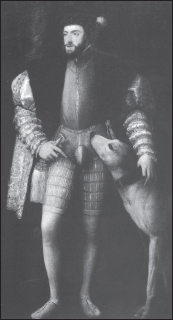
Charles V by Titian
Museo del Prado
IN THE YEAR 1512, the artisan Hubert de Cremer was one of Charles’s struggling subjects. His was the misery of poverty: His father had made the journey east from his native Flanders to Gangelt, in the German duchy of Jülich, many years before, filled with hope and ambition for the future, but Hubert had become a cobbler scrabbling to find enough money to feed his wife and family. He already had five children, and his wife was expecting their sixth, but though he was willing to work, he had found few opportunities in Gangelt. His best hope of staving off poverty lay in returning to Rupelmonde, where his father’s family still lived.
The port of Antwerp, just a few miles downriver from the town of Rupelmonde, was one of the most affluent centers in the Low Countries, one of the largest cities of its day, where eighty thousand people lived in houses that were the envy of the rest of Europe. Antwerp had been a busy port on the River Scheldt for centuries – its name comes from the Flemish aan-de-werfen (on the wharves) – but the bales and baskets piled high on the docks were not just a sign of its prosperity; they were tangible evidence that the world was growing faster than it had ever done before. The ships that maneuvered for position brought cargoes not only from the Baltic, England, Spain, and Germany but from farther afield as well, from lands that were so distant, so newly discovered, they still seemed almost mythological to the laborers who sweated to unload the merchandise.
Not many years before, the ports of Venice and the other Italian city-states had been crowded with cargo ships, linking with the ancient overland routes from the East to bring spices, precious stones, silks, and finery to Europe. For centuries, all roads really had led to Rome. But by 1512, ships could follow Vasco da Gama’s route to India around the southern tip of Africa and bring their cargoes straight back to the north and west of Europe. The rapidly growing trade with the New World, too, could be carried out more easily from western Europe than from Italy. The pattern of commerce was shifting: More than 2,500 ships might be crowded into Antwerp’s port at any one time, and 500 vessels would come and go in a single day.
With the cargoes came stories of new expeditions, and of the fresh discoveries that were being made in the New World and in the farthest reaches of Asia. Such talk, true and false alike, was devoured by the educated citizens; but the bales, bundles, and boxes were the real stimuli to anyone with imagination and curiosity about distant lands. The waters of the Scheldt flowed for hundreds of miles through a continent hungry for the goods that the ships had unloaded. Along the docks of Antwerp, the age of discoveries was a daily reality.
When he arrived there late in February 1512, Hubert had four sons, a daughter, a pregnant wife, and no real prospects of employment. His one advantage was an uncle in the Catholic Church. Several years before, in Gangelt, Hubert had named his firstborn child after his father’s brother, and he turned to that same Uncle Gisbert, the chaplain of Rupelmonde’s Hospice of St. Jean. Gisbert was not wealthy but comfortably off, and he used his influence to find Hubert and his family a place in the monastery guesthouse. It would have been a simple, even spartan home, but still a welcome shelter for a family on the brink of penury. There, at six o’clock in the morning on March 5, 1512, only a few days after she had arrived in Flanders, Hubert’s wife, Emerance, gave birth to their sixth child, Gerard. The anxious cobbler made a precise note of the date and time, as he had done for the birth of his other children.
The town’s tax records show Hubert, Emerance, and their six children lived on top of each other in a lodging half the size of the house his single uncle Gisbert kept for himself.* Gisbert, a busy, energetic priest, filled with ambition for himself and his family, was the key to whatever future they would have. For him as for many others, the Church had been a route to worldly security as well as to salvation, and his post as chaplain at the hospice gave him financial independence, respectability, and a degree of influence. Well educated himself, he determined to do what he could for the rest of his family. Within a few months, his nephew Hubert was using his skills to produce shoes for the hospice and steadily building up his business in the town, while the older boys, with Gisbert’s encouragement and influence, had started on careers of their own in the Church. Rupelmonde’s church records show that Hubert’s second son, Dominic, eventually followed his great-uncle into the post of chaplain at the hospice, while the eldest boy, Gisbert, named in his great-uncle’s honor, became a priest in the nearby village of St. Nicholas. There was no doubt that they and the other two boys would do well, while their sister, Barbe, was being carefully prepared for the marriage that would secure her future.
Gerard, like his brothers, received his education on the hard wooden benches of the local village school. The few hundred houses in Rupelmonde were huddled around the church, a short way from the river and the imposing black fort that glowered down upon it. Nearby was the ancient water mill where grain was brought from the surrounding fields, its great rough limestone grinders making the wooden structure groan and vibrate as they turned under the power of the rising and falling tides. Farmers brought their produce to a regular market on the riverbank, while barges would tie up to sell cheeses from Brussels, or herring, imported cloth, and ironware from the wharves of Antwerp. Bigger, seagoing ships often moored at the wharves, pausing on their journeys upriver to Brussels. Outside the village, the landscape stretched away for miles, flat and open.
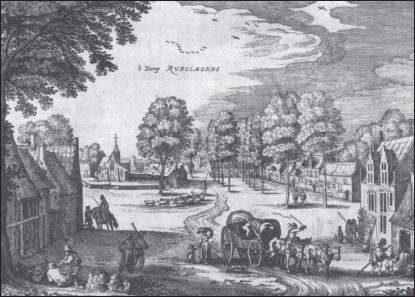
Rupelmonde
British Library, London, Rare Books and Maps Collections
With its fields, mill, market, school, and church, the little town provided for every aspect of life, but the fort, with its high stone walls and seventeen towers, overshadowed everything. Built by Norman invaders in the eleventh century to overawe and terrify the local people, it was no mere monument to past brutality. Behind its bleak walls there still languished criminals, dissidents, traitors, and forgotten men.
The young Gerard was apparently drawn to the sheer variety the landscape offered, for he developed a love of nature that would stay with him throughout his life. From his earliest days, at least according to the stories that grew up around him later, the schoolmaster had little need to encourage his pupil to greater effort in the classroom. Much of the work in the single schoolroom was learning by rote, the children chanting the Latin of the Lord’s Prayer or the Creed, or the questions and answers of the catechism. Every lesson, every moral precept, was based upon the Bible. At home, there was neither leisure nor privacy in the crowded and hardworking household, but the young boy usually managed to find a place to hide away with his books. Often, he would be huddled with them long into the night, forgetting to eat or sleep, and his potential was clearly recognized by his uncle.
In 1526, Hubert de Cremer died suddenly, and the family was threatened with disaster once again. (There is no record of what killed him.) Emerance was able to survive on the little money he had saved, and five of their children were almost old enough to look after themselves. However, Gerard was just fourteen, and if he had had to work in order to earn his keep, his family’s hopes for his future would have been dashed. An apprenticeship could have led only to a life of unremitting toil like his father’s; there would have been no time for learning.
Once again, they had to rely on Gisbert. Three masses a week at the hospice brought him a regular income of some forty-three pounds a year – enough for him to have acquired two small farms as well as his own house, and enough, if he chose, to provide for the education of his great-nephew. The young boy was taken from his family and went to live with his great-uncle, who became not only his benefactor but also his adoptive father and his tutor. Yet if Gerard, like his two elder brothers, were to follow Gisbert into the Church, he would need more than a smattering of Latin grammar picked up at home and on the benches of Rupelmonde’s school. The boy would have to be educated.
Chapter Four Among the Brethren of the Common Life
THE ARTIST ALBRECHT DüRER, journeying through the Netherlands from his native Germany, described ’s Hertogenbosch, stranded on the windswept and unwelcoming plains some seventy-five miles northeast of Antwerp, as “a fair city, with an extremely beautiful church and a strong fortress. …”1 The Gothic ramparts of the Cathedral of St. Jan might have impressed a traveler, but the town itself was a bleak and forbidding place, a long way from the riverside idyll of Rupelmonde. Here, fifteen thousand people lived behind high stone walls, which would surround the young Gerard for the next three years.
The town’s name means “woods of the duke,” and the harsh guttural of the Flemish pronunciation reveals its sixteenth-century soul. It was already one of the oldest towns in the Low Countries when Gerard arrived – no balmy country retreat, but a fortress set up by Duke Henry I of Brabant more than three centuries earlier to protect the remote northern borders of his dukedom. The grim stone walls could keep out foreign enemies, but inside them, ’s Hertogenbosch seethed with religious and political discontent that occasionally erupted in violence, as occurred in many Netherlands towns. ’s Hertogenbosch, the Netherlands, and most of Europe were in ferment. The trouble had been building for decades.
Ten years earlier, when Gerard was still a young boy, stories had begun filtering back from Germany of a young priest who had issued a direct challenge to the Catholic Church on the need for reform and an end to corruption. In nailing his list of ninety-five theses to the church door in Wittenburg, Martin Luther had ignited the first flames of a conflagration that would engulf much of Europe.
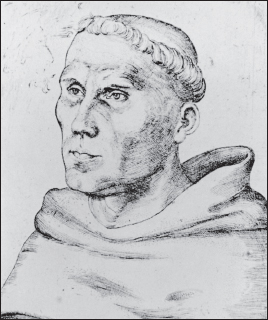
Martin Luther
Science Photo Library, London
Only God, he declared, and not papal authority, could forgive sin; the selling of indulgences by which divine forgiveness could supposedly be guaranteed in return for the payment of cash was a corrupt and cruel deception. Luther called for reform rather than revolution. “If the Pope knew the exactions of the pardon-preachers, he would rather that St. Peter’s church should go to ashes, than that it should be built up with the skin, flesh and bones of his sheep,” he declared in one of his theses. Yet the whole of Christendom, not just the Catholic Church, threatened to go to ashes: Political dissatisfaction and growing national feeling in the Netherlands, Germany, and much of northern Europe had prepared the ground for a conflict that would tear the continent apart, leaving it split irrevocably between Catholics and Protestants.
Johannes Gutenberg’s first presses produced massive runs of printed papal indulgences, but they also turned out seemingly unlimited editions of non-Latin Bibles on which the faithful could rely. Alongside them were other religious texts, mystical books, and lives of the saints, many of them written in the day-to-day language of the people, breaking forever the Catholic Church’s monopoly on Holy Writ. The anxieties of kings, emperors, and the Church itself could do nothing to hold back the rapid spread of movable type.
Printed tracts showered from the new presses like sparks, lighting a thousand fires of heresy – fires that were fed among the German princes and nationalists in the Low Countries by resentment of the emperor’s power. There was already bitterness over the harsh taxes with which Charles tried to claw back the massive debts he had incurred. Despite the treasure that was starting to flow into his coffers from the New World, he relied largely on the merchants of the Netherlands to finance his wars: For every hundred florins in gold and silver that fell into Charles’s lap from the New World, four hundred were squeezed from the taxpayers of the Netherlands. The Venetian ambassador Antonio Soriano described the Low Countries as “the treasures of the King of Spain, his mines, his Indies which have sustained all the Emperor’s enterprises.” Others, more crudely, saw them as a cow to be milked to exhaustion.
The merchants’ pockets were not bottomless, though, and their goodwill was easily exhausted. Every new demand for tax was met by angry resistance, which often mingled with religious dissent and spilled over into fighting on the streets of towns in the Netherlands.
In ’s Hertogenbosch, angry crowds rampaged through the narrow streets while Gerard was at school; but the discontent was more often sullen and unspoken. The town had been home to the artist Hieronymus van Aken, better known today as Hieronymus Bosch.2 His wild, tortured depictions of the sufferings of Hell were well known, apparently orthodox enough, and greatly appreciated by the Church authorities – Bosch had painted several altarpieces for the Cathedral of St. Jan in his hometown – but they had a subversive and less conventional secondary meaning.3 Bosch was a reformist, possibly even an out-and-out heretic who saw the Catholic Church as Satan’s embassy on Earth. The evidence is there in Bosch’s works, a telling example of the double-edged, evasive atmosphere of the town where Gerard was growing up.
Many of the symbols in Bosch’s paintings seem now to be consistent with heretical thinking, and his anger over the corruption and avarice of the Church is even clearer. His massive triptych, The Haywain,4 shows a nun cradling the head of a sick or dying beggar in a conventional representation of the Church’s Christian care for the poor. Elsewhere in the same painting, though, other nuns are sweeping the peasants’ crop of hay into their own bags; in another vignette, one of them seems to be making sexual advances toward a musician. The Ship of Fools5 shows a nun and a monk picking over a dish of cherries, a common image of sexual gratification. Seen together, the symbols are unmistakable, but individually they are subtle enough not to offend.
Bosch led a perilous double life, because he was also a leading member in ’s Hertogenbosch of an orthodox and solemn religious fraternity, the Brotherhood of Our Lady. He was a respected figure in the town, as his father and grandfather had been before him, and even took the city’s name for his own. He married a local woman, owned a house, and died. Little else is known about his life, but that is the point: He had avoided attracting attention.
The school Gisbert chose for his young charge in ’s Hertogenbosch revealed the private thoughts behind his own daily life. Like Hieronymus Bosch, he had taken care not to provoke the Church authorities, but the hardworking Gisbert de Cremer had been leading something of a double life as well, building his career within the Church while discreetly supporting the agitation for reform. He handed Gerard over to a religious community known for their reformist zeal, the Brethren of the Common Life.
The Brethren had a long tradition as teachers, but they were not a comfortable institution. For themselves, they had renounced the possession of property and embraced a life of simple obedience; their rule was self-denying and ascetic, and they expected the boys in their care to abide by it as well. One famous former pupil gave a glimpse of the harsh life the pupils could expect: The humanist Erasmus of Rotterdam, who had written his own biting satires on Church corruption, In Praise of Folly and Colloquia, spoke of beatings and bullying at the school by overzealous teachers who wanted to direct their young charges toward the priesthood. His own youthful love of learning had been thrashed out of him for a time by their merciless severity, he said; his time at the school was nothing more than two years lost from his life. “Their chief care, should they see any youth of unusually high spirit and quick disposition ... is to break his spirit and humble him by blows, threats, scoldings, and other devices,” he told a friend.6

’s Hertogenbosch, from Civitates Orbis Terrarum, 1572
Historic Cities Research Project http://historic-cities.huji.ac.il, The Jewish National and University Library of the Hebrew University of Jerusalem
The Brethren were not monks and took no vows, but they were loyal to the memory of their fourteenth-century founder, Geert Groete, who had drawn crowds with his impassioned preaching against lax ecclesiastical discipline and the corruption of the clergy. They observed a rule of sobriety and chastity that was at least as strict as that in many monasteries. More than a thousand pupils were housed in separate dormitories according to social rank and economic status, ranging from rich to poor. Gerard de Cremer was numbered straightaway among the poor students, making their way each day from the domus pauperum to the school beneath the twisted cathedral gargoyles that Hieronymus Bosch had known so well.
There he encountered the traditional three-branched humanist trivium of grammar, rhetoric, and logic, all of which looked resolutely back toward the certainties and inspiration of the past. Poetry and philosophy came from Homer, Ovid, Plato, Aristotle, and other pagan authors, and theology from Christian divines such as Augustine, Origen, and St. Jerome. Geography, too, came from the distant past: In an age when knowledge of the world was increasing faster than ever before, Gerard and his classmates were pointed sternly toward the learning of Ptolemy and Pliny. All of it was sandwiched between two, sometimes three, daily celebrations of the Mass, and all of it was in Latin. That, not the crudity of workaday Flemish, was the language of the churchman and the scholar.
Among Gerard’s teachers was the grandly named author and playwright Georgius Macropedius – a man already with a dangerous reputation of his own for sympathizing with reformers. Macropedius’s character fitted well with the stern philosophy of the school. In his plays, which were often performed by his pupils for the townsfolk, only the rod and the lash saved boys from willfulness, whoring, theft, and a shameful death on the gallows. To the general approval of the rest of the cast, recalcitrant pupils were soundly whipped until they screamed, and when their mothers tried to intervene, much the same treatment was meted out to them.
That would have been the regime in many schools, at least as far as the pupils were concerned. There was little room for sympathy or consolation. Thus, when news came that Gerard’s mother had followed his father to the grave, the boy had to cope with it on his own. Her death, like that of her husband, did not merit any official record of its cause; death, like sickness, poverty, or disaster, was an ever-present threat. Within the space of two years, Gerard had lost both his parents, and Gisbert’s generosity and his own talents were all he could rely on.
He had clearly fitted in during his time in the ascetic world of the Brethren. Unlike Erasmus, he never complained later in his life of their harshness, and the rules that the Brethren applied to their traditional task of transcribing manuscripts show how diligently he learned their lessons. “You ought to attend in your copying to these things: that you make the letters properly and perfectly, that you copy without error, that you understand the sense of what you are copying, and that you concentrate your wandering mind on the task,” said their rulebook. The art of copying was virtually destroyed by the new flood of printed books by the time Gerard was studying at ’s Hertogenbosch, but as an adult he would become known throughout Europe for the precision of his engraved lettering and his obsession with accuracy, as well as for the single-minded concentration with which he applied himself to his books. He thrived on the traditional emphasis on ancient learning. Ptolemy, introduced to him by the teachers in the cathedral, would remain his scholastic guide and mentor throughout his life.





